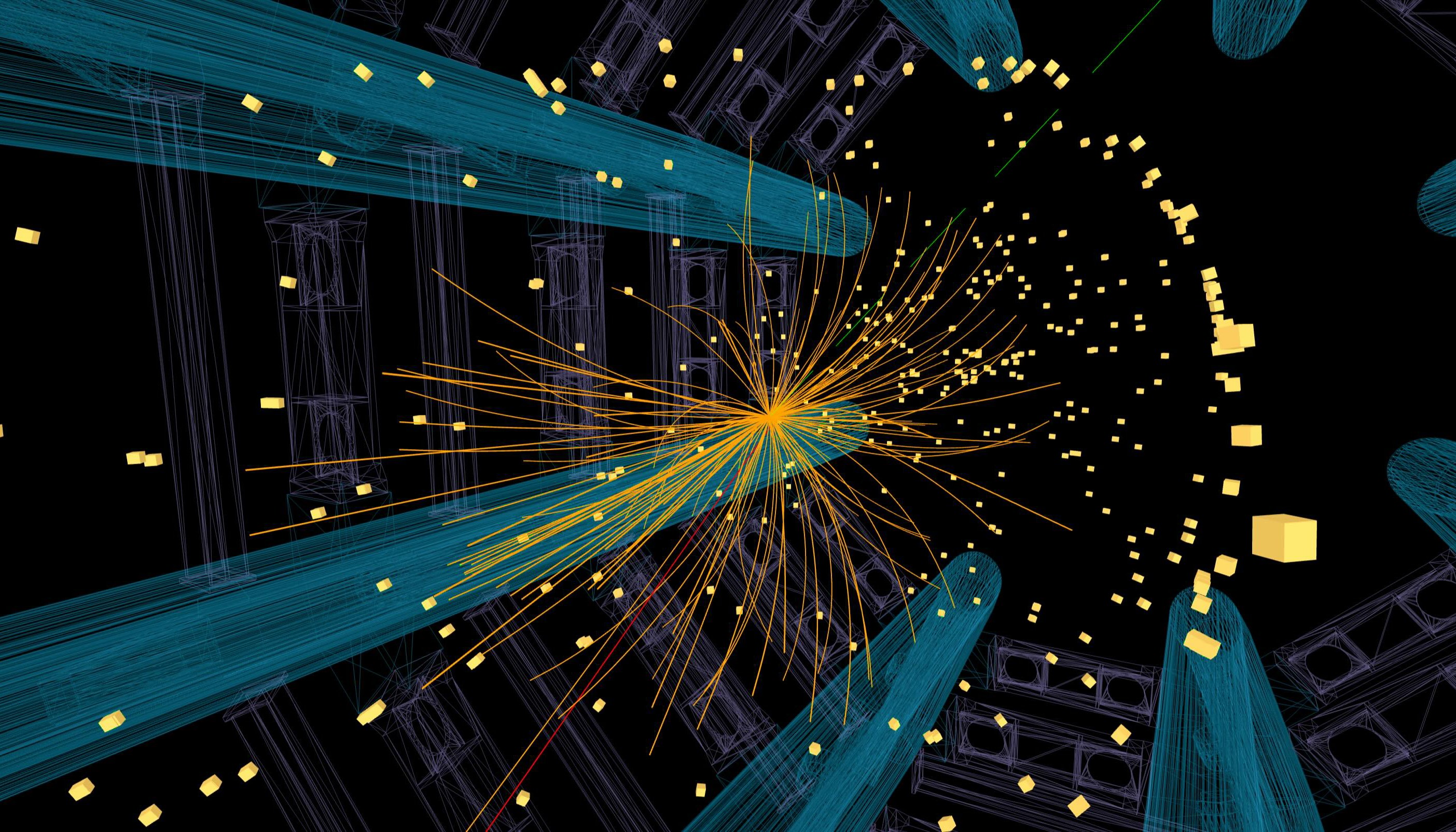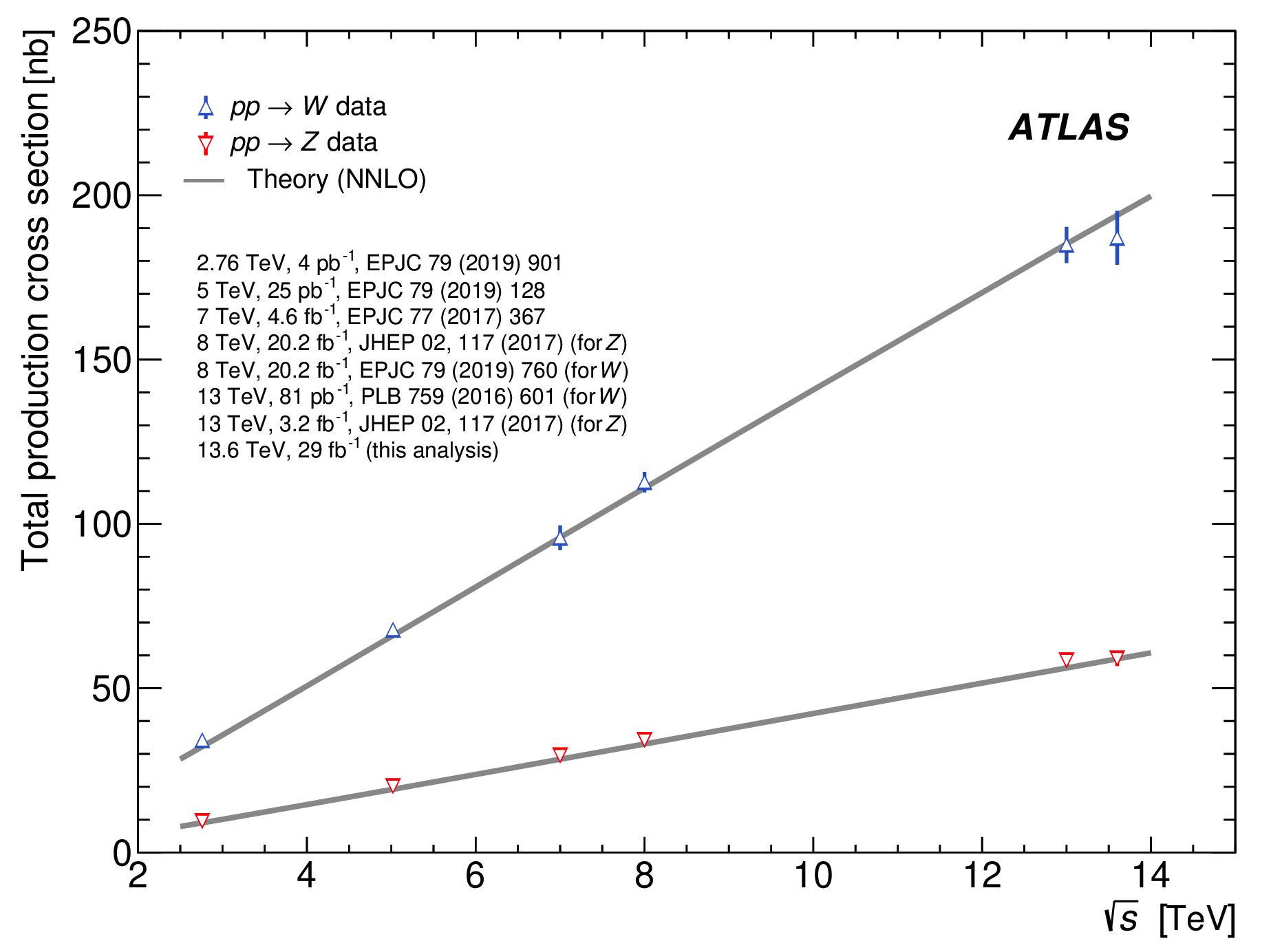Exploring the Weak Force with ATLAS
30 November 2023 | By
Half a century ago, a pivotal discovery at CERN altered the landscape of particle physics. The observation of "weak neutral currents" in 1973, by the Gargamelle collaboration, suggested a tight connection between the electromagnetic and weak forces. This discovery marked the start of a new era of exploration, ultimately leading to the discovery of the W and Z bosons by the UA1 and UA2 collaborations and the Higgs boson by the ATLAS and CMS collaborations. This year, physicists celebrated the 50th anniversary of the observation of neutral currents and the 40th anniversary of the W/Z boson discovery.
The Weak force and the emergence of W and Z Bosons
The weak force is one of the four fundamental forces governing the universe. Unlike the well-understood electromagnetic force, where photons mediate interactions between charged particles, the weak force presented a more complex challenge to describe within the framework of quantum theory. In the 1960s, theorists proposed that the weak interaction was mediated by massive counterparts of the photon: the charged W boson and the neutral Z boson.
While the discovery of the W and Z bosons by the UA1 and UA2 collaborations solidified the foundations of "electroweak" theory, the next quest lay in precision measurements of their properties and in the search for new physics phenomena in their decay products. Colliders — such as the Large Electron Positron (LEP) collider, the Stanford Linear Collider (SLC), and the Tevatron — were built to provide such a testing ground for the theory.
Until the LHC era, the results of those accelerators dominated precision measurements of the properties of the W and Z bosons. Now, the LHC experiments have taken the lead, with results reaching or, in some cases, even surpassing the precision of legacy measurements.
The Z boson and the LHC

Z bosons have emerged, as expected, as one of the most successful probes at the LHC. Their unique characteristics make them vital tools in the quest to understand the theoretical underpinnings of the Standard Model of particle physics and beyond. From precision measurements of the Standard Model to new-physics searches, Z bosons are everywhere.
One of their key features is their high production rate through the "Drell-Yan mechanism". This mechanism involves the annihilation of a quark-antiquark pair into a Z boson. Z bosons also provide a very clean signature when they decay into a pair of electrons or muons, which is crucial for precision measurements of the detector performance and of their properties. This special combination of a high production cross-section and a distinctive signature provides a wealth of invaluable data.
From a purely experimental point of view, Z bosons serve as essential tools for the calibration of the ATLAS detector and to evaluate its performance in terms of reconstruction, trigger and lepton identification. For instance, when the LHC luminosity increased very rapidly in 2011, many if not all of the algorithms required for Z-boson measurements struggled to keep up. Calibration procedures for various particles – including electrons, muons, photons, and hadronic jets – employed Z-boson data over a broad energy range. This was also the case for lepton reconstruction, trigger and identification algorithms, all of which benefited from Z-boson data to assess their efficiency with experimental data.
Critical measurements
The measurements of W and Z bosons at the LHC have provided valuable new insights into the fundamental parameters of the Standard Model. Several of these – such as the W boson mass and width, the weak mixing angle and the strong coupling constant – have been measured by ATLAS with sub-percent-level precision.
The timeline below provides a summary of the remarkable advancements achieved over the thirteen years of ATLAS research.
Future prospects
Looking ahead to the High-Luminosity LHC (HL-LHC), the prospects for Drell-Yan measurements involving W and Z bosons are promising. Continued improvements in all the key measurements are expected with the upgraded detector and much larger event samples. Depending on further improvements to the knowledge of parton distribution functions, the precision of these measurements may even surpass that achieved at previous experiments at LEP/SLD and Tevatron.
Whatever the case, as we look to the future, the role of W and Z bosons remains as essential as ever!

Learn more
- Watch the ATLAS live talk by Dr Ludovica Aperio Bella: Chasing the unknown (with the very well known!
- Watch the BBC Documentary on the W/Z boson discovery: The Geneva Event
- Watch the recording of the scientific symposium at CERN: Electroweak milestones - 50 years of neutral currents, 40 years of W and Z bosons




